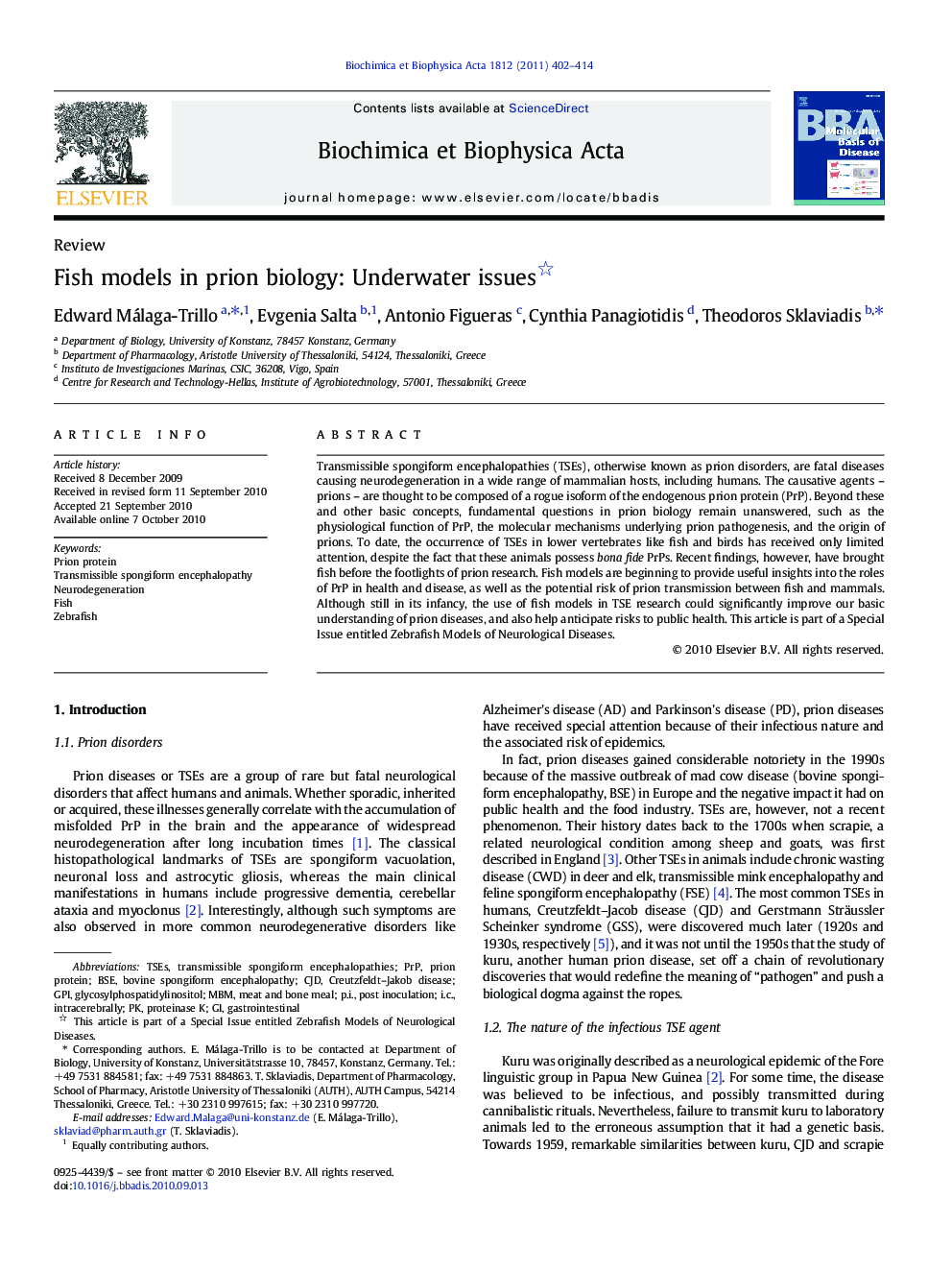| Article ID | Journal | Published Year | Pages | File Type |
|---|---|---|---|---|
| 1905225 | Biochimica et Biophysica Acta (BBA) - Molecular Basis of Disease | 2011 | 13 Pages |
Transmissible spongiform encephalopathies (TSEs), otherwise known as prion disorders, are fatal diseases causing neurodegeneration in a wide range of mammalian hosts, including humans. The causative agents – prions – are thought to be composed of a rogue isoform of the endogenous prion protein (PrP). Beyond these and other basic concepts, fundamental questions in prion biology remain unanswered, such as the physiological function of PrP, the molecular mechanisms underlying prion pathogenesis, and the origin of prions. To date, the occurrence of TSEs in lower vertebrates like fish and birds has received only limited attention, despite the fact that these animals possess bona fide PrPs. Recent findings, however, have brought fish before the footlights of prion research. Fish models are beginning to provide useful insights into the roles of PrP in health and disease, as well as the potential risk of prion transmission between fish and mammals. Although still in its infancy, the use of fish models in TSE research could significantly improve our basic understanding of prion diseases, and also help anticipate risks to public health. This article is part of a Special Issue entitled Zebrafish Models of Neurological Diseases.
Research Highlights►Prion diseases may possibly be transmitted to fish species through the food chain. ►Fish and mammalian PrPs share important cellular roles in cell–cell communication. ►The use of zebrafish in prion research may help elucidating the role of PrP in health and disease and also addressing TSE-related issues concerning public health.
